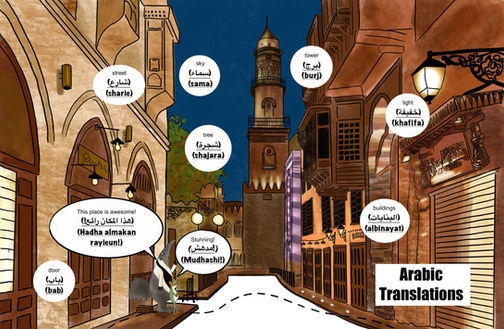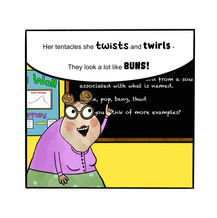AUTHOR ZONE!

Welcome to the author zone!
Here I offer advice on everything, from putting pen to paper on that story idea, to publication and beyond. It's not an easy journey, but if you think you're ready to step into this world, make sure you're armed with knowledge!
To learn a little more about me CLICK HERE. To view my books CLICK HERE.
Writing Picture Books
So you have a great idea and you're ready to start writing? Maybe you've already written something and you're desperate to start sending it out to agents and publishers, or to find an illustrator and hit PUBLISH. Are you really ready? Here are my top tips to make sure your story is really the best it can be:
Tip 1: Read, read and read some more. You need to know the current market (not just Julia Donaldson!). Check out everything from the big publishers, to the little Indie publishers. What stands out to you? What makes each book special? Do you prefer funny or heartfelt? Rhyming or prose? Bright and bold, or muted and calm? You can even learn from the books you don't enjoy, so make sure you raid the bookstores and libraries for inspiration.
Tip 2: Charismatic Characters. You need to care about a character to want to carry on reading a story. Show us their flaws, show us their brilliance. Show us how they feel. Show us why we should care and keep routing for them! Your character should resonate with your audience, so think about characters that will appeal to them, whether they be children, or childlike, human, animals or even inanimate objects!
Tip 3: Plot, plan and structure. You'd be amazed how many people think they've written a great story when they have failed to give it the proper structure. Most stories follow this basic structure:
-
Introduction to the main character
-
What problem do they face?
-
Three attempts to try to solve the problem
-
Climax - All hope is lost...or is it?
-
They finally find the solution. (Adding an unexpected twist is always a great way to finish!)
Of course there are exceptions to every rule. In one of my own books, The Crafty Chameleon, the main character is the baddie. We certainly aren't rooting for him to win, but we do want to see him get his comeuppance!
Check out your favourite stories and see if the plot follows this structure, or if they've done something different. How does your story measure up? Is there enough drama, enough of a reason for readers to keep turning those pages?
Tip 4: Keep it Short! Most publishers and parents prefer shorter, snappier texts of 500 words max. In this day and age, people are busy and attention spans are short! Picture books should definitely never be longer than 1000 words.
Essential Editing
Having your book professionally edited before you send it out to agents, if you're looking to be traditionally published, or look for a suitable illustrator, if you're looking to publish independently, is an essential step. They will spot problems with rhyme and meter if you are writing in rhyme, help you trim your word count, perfect your structure and look for errors in spelling and punctuation. First impressions count, and skipping this step would be a huge mistake. If you're looking for an editor to ensure your picture book is in top shape and ready for the illustration stage, I highly recommend the wonderful Becci Murray. To find out more about the services she offers CLICK HERE.
Finding An Illustrator
Choosing a route to publication can be a huge decision. Traditional publishing can take many years to get a foot in the door, but is a great option if you are not business minded and are patient! Joining an organisation such as SCBWI can help with this. If you decide to go try the traditional route, you don't need to find an illustrator. If a publisher does decide to take you on, they will choose the illustrator and design your book and cover.
If you decide to become an indie author, you will need to seek your own illustrator. There are lots of wonderful, and some not so wonderful illustrators around (the kind who use AI and clip art to try to bodge a book together). If you can find someone whose work you admire, either from seeing books they have previously illustrated, from following them on Instagram or by recommendation from other indie authors, then you're off to a good start. Try to ensure you see a full body of work in their portfolio. Would it suit the style you have in mind for your book? Do they have show a variety of character poses within their portfolio? Your characters should come alive on the page in every scenario.
I am pleased to be able to offer my services as an illustrator to fellow authors, including the full illustration of picture books, the designing of book covers and the formating and design of book interiors. Please check out a range of my illustrations and covers below (swipe to see a full range of human and animal characters and styles) or CLICK HERE to view my portfolio. If you are interested in pricing and availability please don't hesitate to GET IN TOUCH.


Francesca was simply fabulous to work with. From start to finish, communication was excellent. I felt she took the time to fully understand my vision and welcomed suggestions and feedback throughout. Her illustrations were simply stunning and are often commented on by my readers. As a first time author, her experience was invaluable to me as she guided me through the publishing process. She has been a great support ever since, and I couldn't have asked for a better illustrator for my first book. Thank you, Francesca!
Laura Diebelius - Author of the award winning,'I'm Going to Have a Sister' and 'I'm Going To Have a Brother'.

'A wonderfully illustrated picture book celebrating sibling love and how it's not always so easy! A GOLD MEDAL WINNER and highly recommended.'
- The Wishing Shelf Book Awards.
Both books have since been accepted for publication by Tiny Tree Books with a traditional publishing deal. To read more about Laura's journey CLICK HERE

I am thrilled to share my journey of publishing my debut children's picture book, made truly magical by Francesca's stunning illustrations. Her artwork brought my story to life in ways I had never imagined, and the praise from my family and friends confirms her talent. Francesca was always available throughout the process, providing valuable insights and guidance. I feel incredibly fortunate to have collaborated with such a gifted illustrator and wonderful person.
Mickie. B - Author of Guess What I've Just Seen?
Being Indie
So you've decided to become an Indie author? There's so much to consider. You will be wearing a lot of hats! You won't just be an author. Even if you get someone else to edit, illustrate, design and format your book(s), you will still be a publisher, trying your hands at marketing on social media and beyond. Finding your author crew is important. Surround yourself with great people so you can support and help each other. You'll be figuring out adverts to drive sales to your website or on Amazon, visiting bookstores and libraries to promote yourself, scheduling, preparing for, and carrying out school visits and other in person sales events. You might even be packing and sending out books as you sell them, depending on the distribution route you decide to take. It can often be overwhelming, but it is wonderful to be the one in control of your own destiny. Plus if you do succeed, you are the one who benefits.
Here are your main options as an indie author:
P.O.D - Print-on Demand
A great way to dip your toes into the world of publishing, especially if you are short on capital to invest. It's also better for the environment as the books are only printed and sent out once they have actually been purchased. KDP (Kindle Direct Publishing) used to have the upper hand here along with Ingram Spark, due to their distribution capabilities. The most frustrating part with both companies are the quality. Sometimes a customer receives a copy that has been printed incorrectly, and the quality of paper and print is much lower than traditionally published books. The print cost also went up recently, so you make less money per book. Even more if you're paying for Amazon Ads. The good news is that they finally have some competition in the form of new kids on the block, Bookvault.
Customers can order directly from The Great British Bookshop, from Amazon (not with Prime unfortunately), and from your own website. They also distribute to bookstores who choose to order from you. The quality is fantastic, comparable to the traditionally published books with thick, glossy pages, and they plant trees with every order! They even have some exciting new options coming such as box sets and foil cover details. In my opinion, the best option available for P.O.D right now. You also make more money per book.
Offset Printing
You will make much more money per book sold, and have more options available to you if you can afford to choose to offset print. The more you print, the cheaper it gets per book, therefore the more money you make. There's a lot to consider though, and not just the huge cost. Where will you store books if you print this way? What if you publish more books? How will you sell them? Do you have a full marketing plan? Are you the kind of person who can sell things easily in person? Do you have a huge following online? Are you selling them directly or choosing an Amazon distribution option? How much will it cost for Amazon to do that for you?
Choosing a local printer, a great online company such Mixam, printing cheaply in China, or using a company with distribution capabilities such as IAPC are all options to consider. Just ensure you do your research and consider everything before taking this huge leap. Often, authors will start with P.O.D, then move on to offset once they know they have a good market for their books.
Whichever option you choose, you will need an ISBN for your book. In the UK you can purchase ISBN's singularly or in a bundle from nielsenisbnstore.com
Good luck with your journey!
.jpg)
























